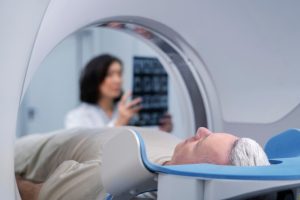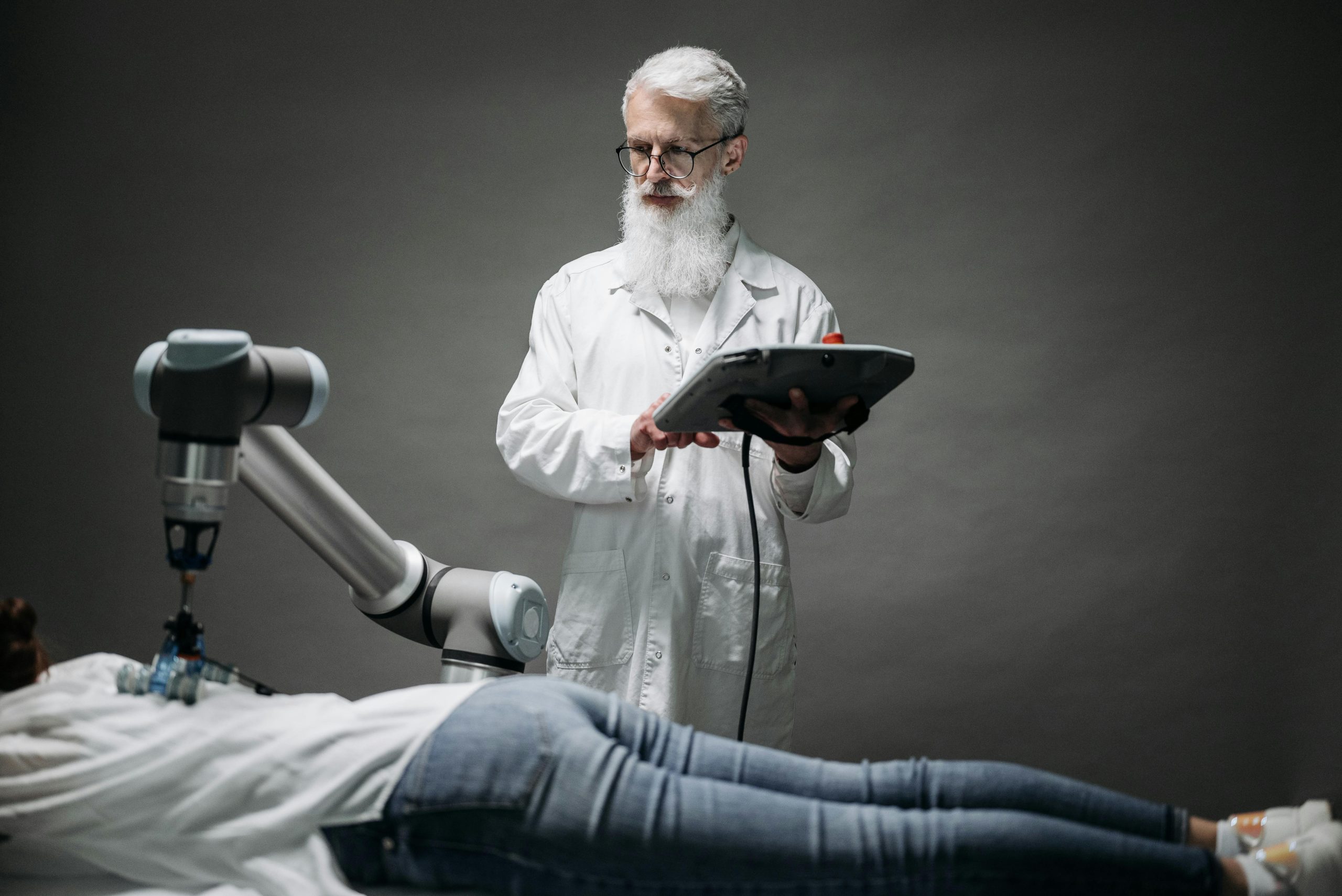The healthcare industry is undergoing rapid transformation, with artificial intelligence (AI) at the forefront of many revolutionary advances. One area where AI is making profound strides is in imaging and diagnostics, offering clinicians the ability to detect, diagnose, and treat diseases more efficiently. AI-enabled diagnostics, powered by deep learning and computer vision, are no longer just concepts but are being actively integrated into healthcare systems globally.
In this article, we will explore how AI imaging & diagnostics are transforming healthcare, providing examples of current applications, and detailing the benefits these innovations offer.
1. AI-Enabled Diagnostics: A New Era of Medical Imaging
AI in medical imaging and diagnostics is built upon deep learning models that analyze vast datasets, offering insights previously thought impossible. One of the most remarkable examples of AI’s capability is its partnership with Google Health AI, where the goal is to develop AI-enabled tools that assist clinicians in diagnosing complex diseases. The collaboration with healthcare organizations worldwide is producing AI healthcare solutions that can interpret medical images with accuracy that rivals or surpasses human specialists.
Example:
Google Health’s research in skin disease AI tools uses AI to identify skin, hair, and nail conditions. This tool has the potential to assist users in identifying various dermatological conditions and is based on deep learning in healthcare trained on a diverse range of datasets.
2. Benefits of AI Imaging and Diagnostics

The impact of AI in clinical practice is profound, offering several benefits that are changing the way we approach diagnostics:
Increased Diagnostic Accuracy
AI systems are able to process and analyze complex medical images, detecting patterns that may be invisible to the human eye. In many cases, this has led to more accurate diagnoses, reducing false positives and negatives. For instance, breast cancer detection AI has been shown to identify potential cancers with similar or better accuracy than human radiologists. In one study, published in Nature, AI reduced the rate of false positives in breast cancer detection.
Faster Diagnoses
One of the key benefits of AI-enabled diagnostics is the speed at which diagnoses can be made. Traditional diagnostic methods, especially in imaging, can be time-consuming. However, AI-powered tools, like the Automated Retinal Disease Assessment (ARDA), are designed to quickly detect diabetic retinopathy, a leading cause of blindness, from retinal images. This ensures that patients receive critical care without delays.
Improved Access to Care
AI has the potential to democratize access to healthcare. Tools like AI-powered skin disease diagnostics can be used by individuals to self-assess conditions, allowing them to seek professional care when needed. Similarly, AI-driven lung cancer detection systems, such as those developed by Google Health AI, can improve screening accuracy, making early detection accessible to more people, especially in resource-constrained settings.
3. AI in Action: Diagnostic Applications
Detecting Diabetic Retinopathy
One of the most significant applications of AI in medical imaging is the detection of diabetic retinopathy, a condition that can cause blindness. Google Health’s ARDA is used across India and other parts of the world to identify this disease in diabetic patients. Early detection and regular screening can prevent millions from losing their vision. The AI model not only diagnoses diabetic retinopathy but can also predict whether a patient will develop the condition, helping doctors tailor treatment plans.
AI in Lung Cancer Detection
Lung cancer is the deadliest cancer, causing more than 1.8 million deaths annually. With the help of AI, particularly AI for lung cancer detection, researchers are developing tools that analyze lung scans to identify early signs of cancer. Published in Nature Medicine, this AI tool demonstrates promising accuracy, potentially aiding in early detection and increasing survival rates.
AI in Anemia Detection
Another significant development is AI’s ability to detect anemia, a condition affecting 1.6 billion people worldwide. Through anemia detection AI, deep learning models analyze retinal images to detect signs of anemia, such as low hemoglobin levels. This research, published in Nature Biomedical Engineering, showcases how AI can offer non-invasive, simple diagnostic solutions that could one day be used in routine screenings.
AI in Cardiovascular Risk Assessment
AI’s role extends beyond the diagnosis of diseases; it also aids in predicting risks. For example, Google Health’s AI cardiovascular risk assessment leverages retinal images to predict the likelihood of a heart attack or stroke. By identifying at-risk patients early, physicians can take preventive measures, potentially saving lives.
4. Expanding the Scope: Future Applications
While AI is already revolutionizing many areas of diagnostics, its potential applications continue to expand. Researchers are exploring AI for use in additional domains, such as:
Radiotherapy Planning

AI advancements are also being applied in radiotherapy planning, where precision is key to successful cancer treatment. Google Health, in collaboration with the Mayo Clinic, is researching AI’s ability to segment healthy tissue from tumors, streamlining the treatment planning process and reducing time for clinicians.
AI in Colorectal Cancer Screening
Another promising application is AI’s role in improving colonoscopy screenings. Colorectal cancer is the second deadliest cancer in the United States, causing 900,000 deaths per year. AI tools can alert doctors to missed areas of the colon wall, increasing the likelihood of discovering polyps that could become cancerous.
Prostate Cancer Diagnosis
Google Health is also using AI for prostate cancer diagnosis. By analyzing biopsy samples with AI, clinicians can receive expert-level assessments of Gleason grades, a key factor in determining the aggressiveness of prostate cancer. The AI’s accuracy could help doctors tailor more effective treatment plans.
5. Benefits of AI Imaging for Healthcare Providers and Patients
AI’s transformative power in imaging and diagnostics not only benefits healthcare providers but also patients in numerous ways:
Reduced Diagnostic Errors
Human error in diagnosing diseases, particularly in imaging, can lead to incorrect or delayed treatments. AI tools significantly reduce this risk by offering a second opinion, often catching what even seasoned professionals might miss. For example, breast cancer detection AI can reduce the time between screening and diagnosis, thereby narrowing the assessment gap and improving patient outcomes.
Personalized Treatment Plans
With AI healthcare solutions, doctors can offer more personalized care. AI’s ability to predict the progression of diseases, like diabetic retinopathy or cardiovascular conditions, means treatments can be tailored to individual patients’ needs, ensuring better health outcomes.
Non-Invasive Screening
One of the biggest advantages of AI in clinical practice is its potential to replace or supplement invasive diagnostic procedures with non-invasive ones. AI models for anemia detection and cardiovascular risk assessments using simple retinal images are perfect examples of how patients could be screened without the need for blood tests or specialized equipment.
6. Challenges and Future Directions
While the promise of AI in diagnostics is great, there are challenges that must be overcome. These include ensuring AI models are trained on diverse and high-quality datasets to avoid bias, securing regulatory approvals, and addressing ethical concerns regarding patient data privacy.
Additionally, AI’s integration into the healthcare workflow must be seamless to gain widespread adoption. For example, AI models for breast cancer detection are currently being tested in clinical environments to assess how they can reduce the gap between screening and diagnosis.
Conclusion
AI imaging and diagnostics are revolutionizing the field of medicine by enhancing diagnostic accuracy, improving access to care, and offering faster, non-invasive solutions. From detecting diabetic retinopathy and breast cancer to assessing cardiovascular risks, AI healthcare solutions are empowering doctors and patients alike. As AI technology continues to evolve, we can expect to see even more groundbreaking applications that will reshape the future of medical diagnostics.
With its ability to transform clinical practice, AI is poised to not only make healthcare more efficient but also more accessible, ultimately leading to better patient outcomes and a healthier world.




